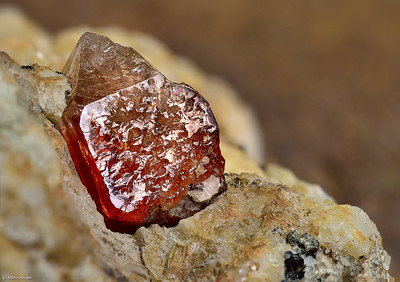Hades, the Greek God of the underworld, inspired the name Hadean Eon, which geologists use to describe Earth’s first 600 million years. Scientists previously thought a lava ocean covered the Earth during the Hadean. However, they recently discovered Hadean-aged minerals in rocks formed more recently. These minerals are called zircons, and the stories in these zircons suggest the Hadean Earth had solid land, oceans, and maybe even an active water cycle.
Researchers from the UAE, Australia, and China sought to test whether freshwater existed on the Hadean Earth. They gathered sandstone samples from the Jack Hills in Australia. These samples contained grains eroded from older rocks, including zircons, which are resistant to weathering. Scientists in the past documented that 7% of the zircon grains in the Jack Hills date back to the Hadean Eon, making these grains some of the oldest materials currently available.
The team explained that for zircon grains to be suitable for this study, they must retain the same chemical composition as the Hadean magma they crystallized from. In this case, they can analyze the zircon grains to determine what the magma was made of. To select suitable grains, the researchers photographed the zircons and illuminated them with electron beams using a method called cathodoluminescence.
The researchers looked for zircon grains that were structurally intact, clear, and homogenous in color and fluorescence. They measured the abundances of uranium and lead atoms with different numbers of neutrons, called isotopes, in the zircons using a technique called mass spectrometry. They explained that the ratio of these isotopes, denoted 238U and 206Pb, indicates when it crystallized from the magma, which is the age of the crystal.
The researchers also measured the ratios of 2 oxygen isotopes, denoted 18O and 16O, in the zircons. They explained that oxygen isotope ratios are extremely sensitive to interactions between fluids and rocks. So they tracked the variation of O isotope ratios in the Jack Hills zircons to track when the water cycle began. The researchers’ results confirmed that the zircon grains were from primary magma sources.
Next, they determined how the different oxygen isotope ratios in the zircons were produced. They explained that 18O is slightly heavier than 16O because it has 2 more neutrons. Typically, zircon crystals that grew in magma from the mantle have oxygen isotope ratios with the same distribution of light and heavy oxygen isotopes as modern ocean water. To produce oxygen isotope ratios that are heavy, meaning they contain a higher amount of 18O than ocean water, pieces of the earth’s crust must be incorporated into the melt.
On the other hand, interactions between magma and fluids produce light oxygen isotope ratios. Zircons with light oxygen isotope ratios have less 18O than modern ocean water. To form such light oxygen isotope ratios, the magma must be high in temperature and interact with fluids. The researchers found zircon crystals that crystallized around 2 to 4 billion years ago with extremely light oxygen isotope ratios, indicating their original melt interacted with surface water. These ratios suggested that land had emerged above the ocean, allowing water to accumulate on Earth’s surface by that time.
The researchers used a computational model to determine what type of surface water caused the extremely light oxygen isotope ratios in the zircon grains. They tested whether the zircon oxygen isotope ratios could result from magma interacting with only seawater, only freshwater, or a mixture of both. They found that magma interacting with seawater alone could not explain the light oxygen isotope ratios, indicating that it was a mixture. Thus, the researchers proposed that freshwater interacted with the early Hadean crust over tens to hundreds of millions of years to produce the light oxygen isotope ratios.
The researchers concluded that an active water cycle existed on the early Earth. They stated the new estimated time frame for the beginning of the water cycle has implications for when life began on Earth. The presence of land above sea level, freshwater, and the water cycle means that the ingredients for life were already present 550 million years after Earth formed. The researchers theorized that life may have started in freshwater reservoirs on the exposed crust. They remarked that continued research of geological material from this time could reveal more about the initial processes that facilitated early life.


